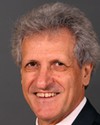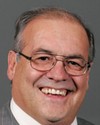Thank you, Mr. Chairman.
My name is Chantal Bernier. I am Assistant Privacy Commissioner for the Privacy Act. Today I am accompanied by Carman Baggaley, principal analyst in our office, who has a vast experience in the subject under discussion.
Today I would like to talk about aviation security and share with you the approach of the Office of the Privacy Commissioner.
What I would like to do, then, is address privacy in the context of aviation security, explain to you our approach, and apply it specifically to the passenger protect program as well as the secure flight program. While I do not intend to include in my presentation the issue of body scanners, I will be happy to answer any questions in that regard.
Let me start with this premise: privacy and security do not have to be at odds. In fact, they must be integrated. And they converge. They converge in this fashion: privacy commands that we collect as little information as possible, in a minimal approach, and as well in the effectiveness of security, in the sense that its effectiveness rests upon collecting only the information that is relevant.
The Canadian Charter of Rights and Freedoms and the Privacy Act, as well as the Personal Information Protection and Electronic Documents Act, together with the case law that interprets them, provide the basis for integrating privacy and security. It may be summarized in the following four principles.
The first one is that the right to privacy is a fundamental right that cannot be infringed upon, unless it is demonstrably necessary for the public good. It follows, then, that the collection of personal information can only occur when it is proven necessary, and it must be proportionate to that necessity. Third, that necessity must be assessed on an ongoing basis by verifying that the collection of personal information is indeed effective and necessary in relation to the identified necessity. Finally, it must also be demonstrated that there are no less privacy-intrusive measures available to reach the same goal.
When the collection and use of personal information are justified under human rights law, then privacy protection must be assured by strict management of personal information according to the rules of personal data protection. We have audited the passenger protect program from this perspective, and I will now turn to that.
Our office has taken an active interest in the Passenger Protect Program since its inception. Most recently, in the fall of 2009, we issued an audit report on the passenger protect program and its specified persons list, commonly called the “no-fly list”.
Our audit focused on the issue of whether Transport Canada has adequate measures in place to protect the personal information within its control. We found that these measures were generally adequate; however, we made recommendations to improve the privacy safeguards of the program. In particular, we recommended that the Transport Canada official who is designated to add or remove names from the list be provided with more information before a final decision is made.
Second, we recommended that Transport Canada strengthen the technological information security safeguards to protect the list.
Third, we recommended that Transport Canada improve its oversight of air carriers to ensure they protect the information on the list. All these recommendations are being or have been implemented. However, we remain concerned by the difficulty of ensuring that foreign carriers are not disclosing information on the list to their government or other parties. This perspective ensures that we both respect the right to privacy in analyzing security measures and that we duly take into account the security needs that must be met.
Let me move now to Secure Flight. We are hearing that there is a possibility of the implementation of the American secure flight program, including overflights. As a U.S. government program, this program is outside our jurisdiction. However, we have looked carefully at this program, including the privacy impact assessment prepared by the Department of Homeland Security, the DHS, because it will have an impact on Canadian travellers when fully implemented.
From a Canadian perspective, the most controversial aspect of Secure Flight is that it will apply to overflights; therefore, to flights to and from Canada that fly through American airspace without necessarily landing in the United States. This means, for example, that American authorities will have the ability to prevent someone in Canada from boarding a flight to Mexico.
We are not questioning the American government's authority to implement such a program, as international law is clear that a state's sovereignty extends to its airspace, but we do need to understand how it may affect Canadian travellers.
I would like to highlight some of the significant aspects of the program. First, air carriers will be required to provide DHS not only with basic identifying information, such as name, date of birth, and gender, but also, if available, with additional information such as passport information and itinerary information. Since this information will always be available for international flights from Canada flying over U.S. airspace, this information will always be provided in full.
Although the DHS privacy impact assessment is somewhat unclear on this, our understanding is that information collected can be disclosed and used for purposes other than aviation security, such as for law enforcement and immigration purposes.
Another aspect is that DHS will retain this information for as long as seven days after the journey has been completed, even for individuals who have raised no issues and do not match the list; for seven years for potential matches; and for 99 years for confirmed matches. A redress mechanism exists to resolve false positives, but it will take 50 to 60 days on average, thus, in effect, cancelling people's travel plans.
One important difference between the secure flight program and the Canadian program as it exists now is that the responsibility for checking passengers against the no-fly list will shift from airlines to DHS. This brings both privacy safeguards and privacy risks.
It is intended to lead to greater accuracy and, therefore, to fewer false positives, for example, for someone who has a similar name but is the wrong person. It eliminates the concerns that air carriers will use, misuse, or inappropriately disclose the list. As I mentioned earlier, this was one of our concerns in the audit of the PPP, the passenger protect program.
On the other hand, this also means that DHS will collect the personal information of Canadian travellers. This is not without risk. We understand that the Canadian government attempted to have Canadian overflights exempted from Secure Flight.
Unfortunately, the government was unsuccessful, except for flights between two Canadian cities. We also understand that the Government of Canada, by way of a diplomatic note, stated that protection of the privacy of Canadians was of “critical concern” in relation to Secure Flight.
We urge the Canadian government to continue to negotiate with American authorities to minimize the impact of Secure Flight and to take the following measures. I would like to make six specific recommendations.
Firstly, the Canadian government should negotiate the collection of minimal personal information, meaning strictly as necessary to ensure proper identification and therefore avoid false positives.
Secondly, question the retention periods of seven days for no match and seven years for potential matches to fulfill the commitment from the U.S. authorities themselves to collect personal information only as necessary for airline security.
Thirdly, negotiate robust and accessible redress mechanisms for Canadians to minimize the impact of an erroneous match.
Fourth, implement measures to support Canadians availing themselves of the DHS redress mechanisms.
Fifth, inform Canadians of the exact scope of personal information that will be collected by DHS on them under Secure Flight.
Finally, clarify Canadian law on the conditions of disclosure of personal information by airlines to DHS to ensure public debate and legal certainty.
In closing, Mr. Chairman, I want to emphasize the point I made earlier about the importance of integrating privacy into aviation security measures. If we can do so, both security and privacy will be enhanced.
I will be happy to take your questions. Thank you.





